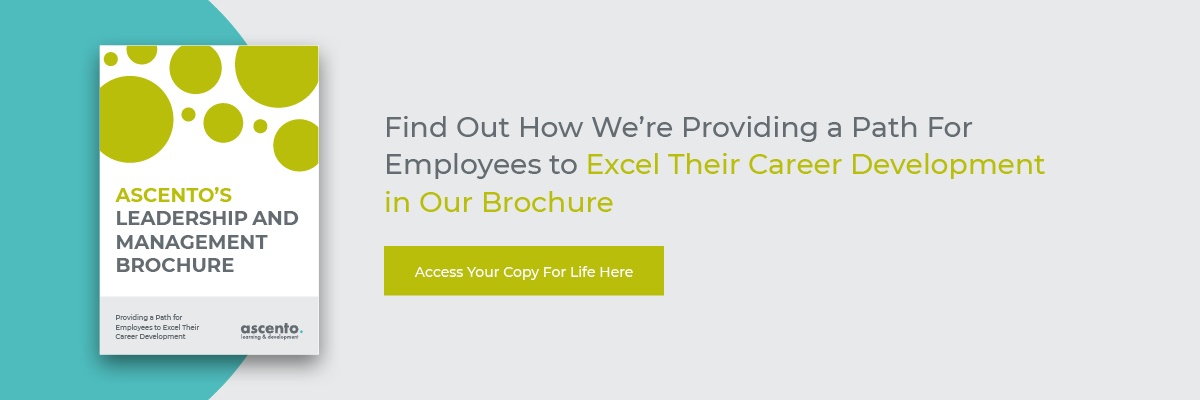Most people want to progress in their careers. They want to take on more responsibilities, continually develop their skills and increase their salary.
Of course, your employees will have their own ideas on what they want to focus on to achieve career progression. However, it’s also your responsibility to provide guidance and offer career development opportunities to help them reach their ultimate goals.
You can do this by developing a progression plan. This blog runs through the best practices when developing progression plans for your employees and outline why they can benefit your business.
- What Is a Progression Plan?
- Best Practices When Creating a Progression Plan
- What Are the Benefits Progression Plans Can Offer Your Business?
WHAT IS A PROGRESSION PLAN?
A progression plan is a roadmap detailing the steps an employee will take as they advance through the ranks at your business.
For example, a member of your team might have been working in a junior role for a couple of years. Naturally, this person will have aspirations to move into a more senior position in the future.
There will be goals they need to achieve for this to happen, skills to acquire and best practices to implement into their working routine.
A progression plan is a documented strategy that provides your employees with a clear picture of everything they need to focus on to reach that next step in their career. But what needs to be included in this plan so employees can get the most use out of it?
BEST PRACTICES WHEN CREATING A PROGRESSION PLAN
You should always take a collaborative approach when creating a progression plan for your employees. They should have an idea of what they want to achieve and you should have a grasp on what they need to focus on to help them get there.
This starts with an honest conversation. Your employee should spend some time doing an honest self-assessment. What makes them feel motivated? Where do they see themselves in five years? What are they good at and what do they struggle with?
You can then start to map out goals, milestones and critical areas to focus on moving forward and collate them into a document (the progression plan).
Here are some best practices to keep in mind when you actually go ahead and start creating the progress plan for your employees:
MAP OUT CLEAR GOALS
Goals are important. They give your employees something to work towards. When they hit a goal, they know they’ve made progress. Once they start making progress, they’ll feel motivated to keep moving forward.
It’s up to you and your employee to determine these goals. For example, they might want to become a more effective communicator.
If that’s the case, a goal might be for them to host a talk in front of the rest of your department. Once the goal has been mapped out, it’s then up to the employee (with your guidance) to hit the ground running and do what they need to do for that talk to take place.
set timelines
Once you’ve mapped out some goals in the progression plan, you should put timelines on which they need to be completed.
Timelines are an excellent way to boost your employee’s productivity and hold them accountable. Timelines also make it easier for your employees to look to the future and have a realistic expectation on how long it’ll take to achieve their goal.
When you’re setting timelines, make sure they’re realistic. If you select a goal for your employee to achieve on an unrealistic timeline, you’ll probably set them up for failure. No one wants that
INCLUDE TRAINING OPPORTUNITIES IN THE PLAN
Investing in training opportunities is one of the most effective ways to improve employee morale. However, this shouldn’t be seen as a burden or a box-ticking exercise for your employees.
Instead, you should work with an established training partner who can create a catered programme to meet the needs of both your employees and your business.
By investing in training, you offer your employees the chance to strengthen their skills. In turn, this should allow them to meet their goals quicker and see the value from the progression plan you’ve created.
REGULARLY KEEP TABS ON THE PROGRESSION PLAN
You shouldn’t put your heart and soul into creating a progression plan for your employees, only for it to be used once or twice and then never mentioned again.
Employees should look at the progression plan as their roadmap to success. Whether they use it when making business decisions or reference it during a one-to-one, it should be kept close by at all times.
A progression plan should be a working document. Update it regularly, tick off goals when they’re completed and use it as a way to collaborate with your employees and bounce ideas off each other.
WHAT ARE THE BENEFITS PROGRESSION PLANS CAN OFFER YOUR BUSINESS?
Investing the time and energy into developing a progression plan for your employees shows them you’re passionate about contributing to their success and helping them achieve their goals.
Because of this, employees feel more motivated to give something back and contribute to the success of your business. Not only does this increase profitability, but it also increases retention and morale.
A progression plan should include upskilling opportunities and direction for employees. Therefore, it allows your business to attract top new talent. According to a 2021 LinkedIn study, 76% of Gen-Z’s see learning as the key to advancing in their career.
With this in mind, you should consider the support your business might need when providing training and development opportunities for your employees — we’re here to help.
READY TO START PUTTING YOUR PLANS INTO ACTION?
We run a range of leadership programmes aimed at providing your employees with the skills and confidence they need to hit their goals and progress in their careers. You can find out more about the leadership programmes and their role when it comes to creating effective progression plans for your employees below.




.webp)




